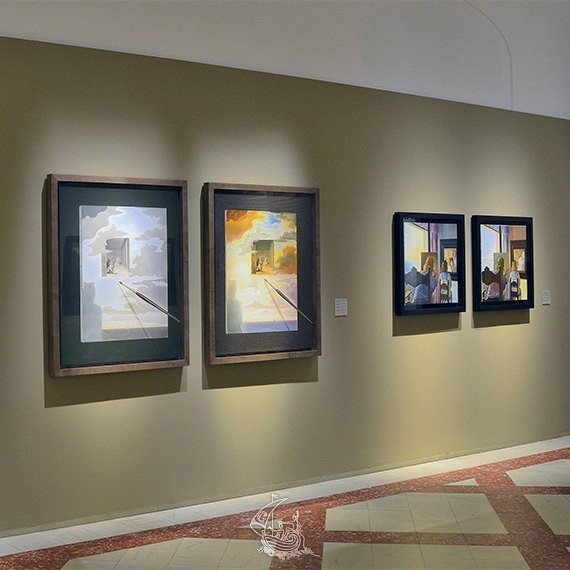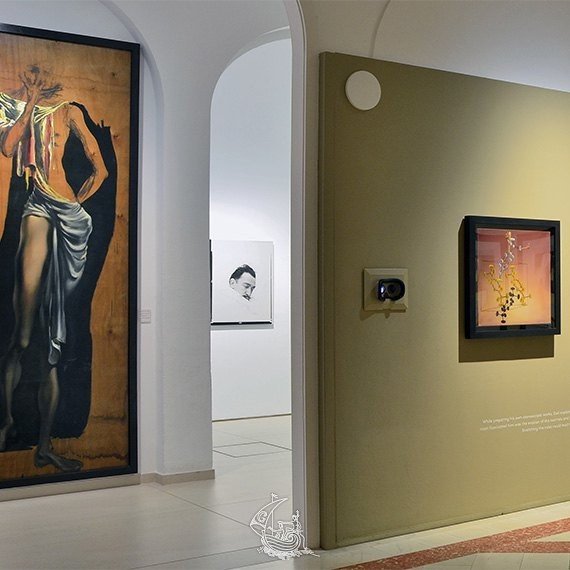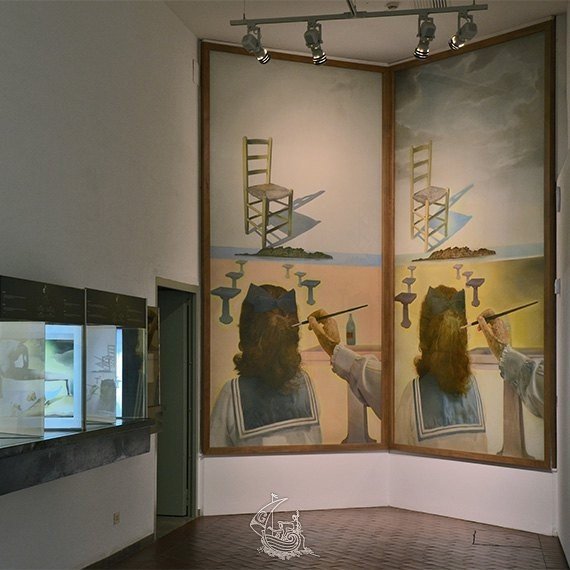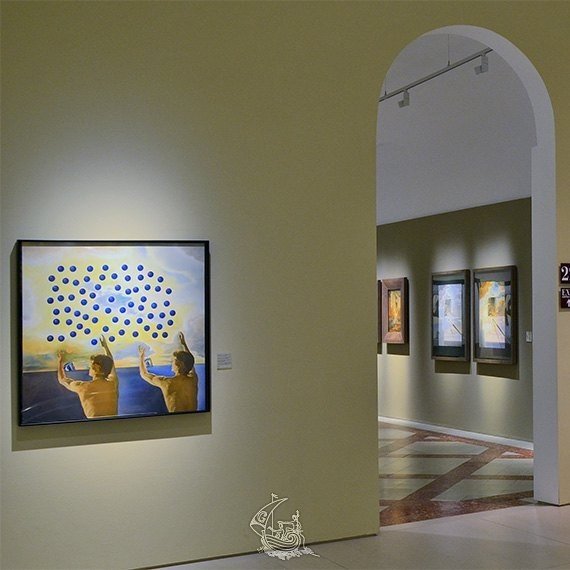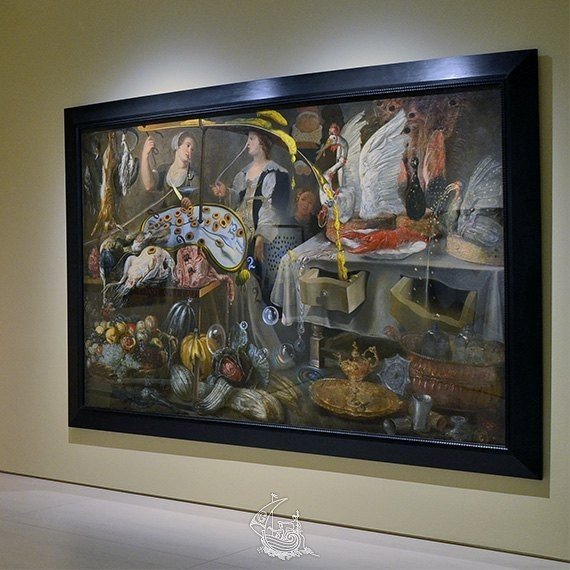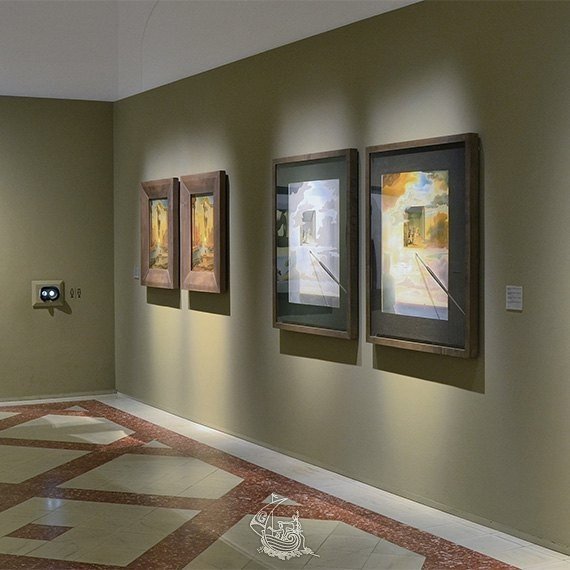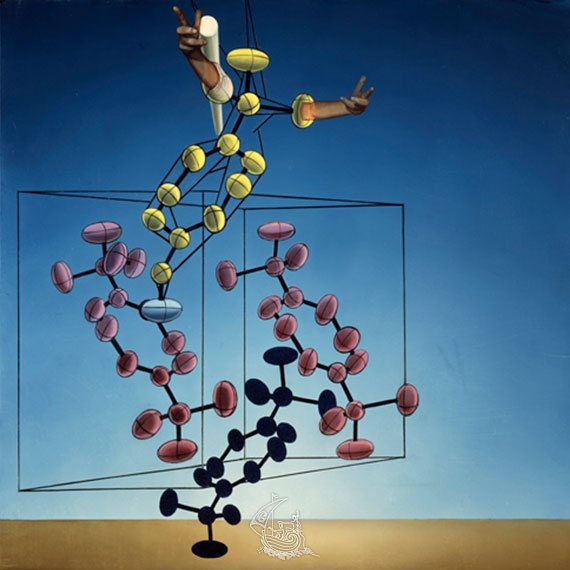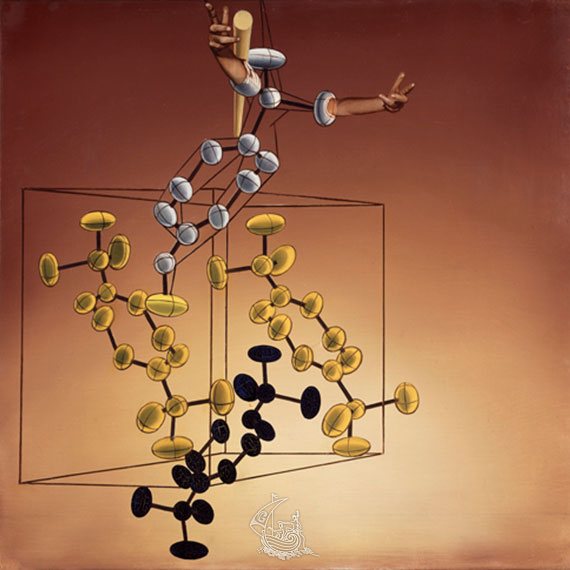Exhibition
Salvador Dalí was an artist with boundless curiosity who was constantly in search of the latest technical developments in order to apply these to his creations. From the mid-1960s and throughout the 1970s, his interest focused above all on virtual images and depth. This moment coincided with the preparation and subsequent inauguration of the Theatre-Museum and the painter indeed dedicated some of the museum’s spaces to optical illusions: anamorphosis, stereoscopy and holography. At the end of the route around the museum, the Optical Illusions Room, number 19, recreates the result of the painter’s studies in this field.
This temporary exhibition, in the room 22 of the Dalí Theatre-Museum, highlights the artist’s later work related to optical illusions. Six pairs of stereoscopic works will be on display accompanied by equipment to observe the three-dimensional effects: Dalí from behind painting Gala from behind immortalized by six virtual corneas momentarily reflected in six real mirrors, c. 1972-73; Gala’s foot, c. 1975-76; Untitled. According to ‘Las Meninas’ by Velázquez, c. 1975-76; The structure of DNA, c. 1975-76; Dalí’s hand drawing back the Golden Fleece in the form of a cloud to show Gala, completely nude, the dawn, very, very far away behind the sun, 1977-78; Dalí lifting the skin of the Mediterranean Sea to show Gala the birth of Venus, 1978.
Stereoscopic images
Stereoscopy is the result of the vision of two flat images of the same object, taken from different perspectives. When each eye sees one of the images, the brain adds them together and this produces a sensation of depth. Based on this principle, Dalí created pairs of paintings of almost identical images, but seen from different focal points in order to produce three-dimensional effects when viewed. To achieve a perfect relief effect, Dalí slightly shifted the centre of each image in relation to the viewer’s eyes; these pairs of paintings are therefore never identical copies. In fact, the colours of the images also change, sometimes very obviously. The resulting composition formed in our brains becomes an image in three dimensions.
According to Antoni Pitxot, when Dalí was preparing these stereoscopic paintings, one of the aspects that most fascinated him was the possibility of escaping the order and the limitations imposed by the rules of optical experiments and, thus, be able to recreate new illusions. With this temporary exhibition, the Dalí Foundation also hopes to achieve this objective.
Exhibition curated by Montse Aguer, director of the Dalí Museums, and coordinated by Carme Ruiz, from the CED.
Download press releaseVideo
At the Theatre-Museum, in room 19, there is a permanent display of photographs of some of Dalí’s stereoscopic works, staged with mirrors that allow the three-dimensional effect to be observed. In order to see the relief, one must simply bring one’s face close to the glass, at the centre of the edge of the two mirrors. In contrast, in room number 22, where we present this temporary exhibition, some devices have been installed next to each pair of stereoscopic works in order to see the three-dimensionality. These devices consist of special glasses and a mobile telephone screen, like those typically used in virtual reality projects. We have adapted the mechanisms that Dalí proposed in the 1970s to view his stereoscopic works to the 21st century.
A project of the Fundació Gala-Salvador Dalí filmed by Doc Doc Films.


